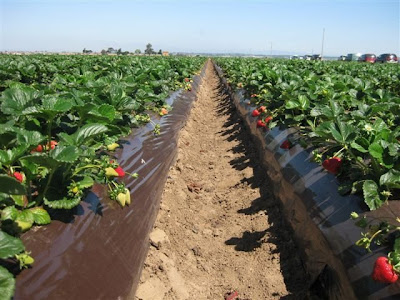(Source: http://northerncaliforniahikingtrails.com/blog/wp-content/uploads/2008/08/sacramento-river-rafting.jpg)
For starters, the temperature in Sacramento throughout the year is pretty predictable and does not often have the ability to change rapidly. According to The Weather Channel, the average high temperature in Sacramento is 94 degrees Fahrenheit in July, and the average low temperature is 40 degrees Fahrenheit in December. The record high in Sacramento is 114 degrees Fahrenheit, and the record low is 14 degrees Fahrenheit. (Weather.com) This shows us that the average temperatures in Sacramento have a range of 54 degrees, which is quite mild compared to other places around the country. Even when comparing the record highs and lows, there is only a 100 degree difference between the two. However, when reviewing the temperatures in the Great Plains, there is no doubt that they have worse weather than we do. Due to the rapid climb in Latitude from the top of the Great Plains in Canada, all the way down to Texas, it's hard to give an exact average temperature that is able to work with the entire region. However, what can be noted is the extreme temperatures that are seen in the upper and lower portions of the region. In the Southern region within Texas and in the Northern region within North Dakota, temperatures as high as 121 degrees Fahrenheit have been reported in each place. North Dakota also has the record lowest temperature within the region as well, with the area dropping to be as cold as -60 degrees Fahrenheit. When solely viewing the range of extreme high and low temperatures in North Dakota, we can see that there is a range that is between 181 degrees in this state alone, which bears the biggest example of extreme temperatures in this region.
(Source: http://druidnetwork.org/files/namerica/nplains_winter.jpg)
Precipitation levels between Sacramento and the Great Plains vary as well. According to The Weather Channel, the average rainfall per year in Sacramento is 19.37 inches, with the highest amount of rainfall occurring in January, and the lowest amount occurring in June through August. In the Great Plains, these numbers very based on the location and year. In some areas in the Southeast, the average rainfall is 42 inches per year, while the Southeast only gets an average of 16 inches per year. Other factors, such as the severe droughts that occur in the area, also affect these averages, and can cause considerable issues to the crops that grow within the area. It is also important to note that the rainfall in the Great Plains normally occurs mainly from April to August, which is vastly different than the rainfall patterns seen in Sacramento.
(Source: http://www.kswestumc.org/console/files/oPictures_Pages_HSBCSF/KansasEastFarm_JM_7ZUUGUXY.jpg)
However, what is probably the most noticeable difference (and the most spectacular one) is the difference in extreme weather that occurs within each region. Sacramento's weather per year does not have too many noticeable changes. Normally, the only noticeable change that can occur is some added rainfall and thunderstorms in some years more than others, slightly higher chances of hail and sometimes even snow. During most years, high winds will pick up in the summertime throughout the city, which adds onto the already dry conditions due to the hot weather. The Great Plains, however, has an entirely different set of extreme weather patterns that occur throughout the region. Weather such as heavy thunderstorms and strong winds are common throughout the Great Plains every year, due to the fact that air masses do not run into much resistance until they enter the region. Hail is also very common throughout the area, and can sometime reach sizes that are bigger than 3-4 inches. However, probably the most spectacular weather that occurs in this area would have to be the tornadoes which form here during the spring and early summer. The Great Plains suffers from more tornadoes per year than any other region in the United States, which gives the region the famous name of being the "Tornado Alley" of North America. Other extreme weather in this area includes blizzards, which are known to kill both crops and livestock thanks to the amount of snow that falls in the area within such a short time.
In conclusion, these two areas differ greatly in the types of weather that are seen in each area. After reviewing the extreme temperature and weather conditions that occur in the Great Plains, it's no wonder why so many people end up leaving their region to settle in places such as Sacramento and other portions of California instead.




